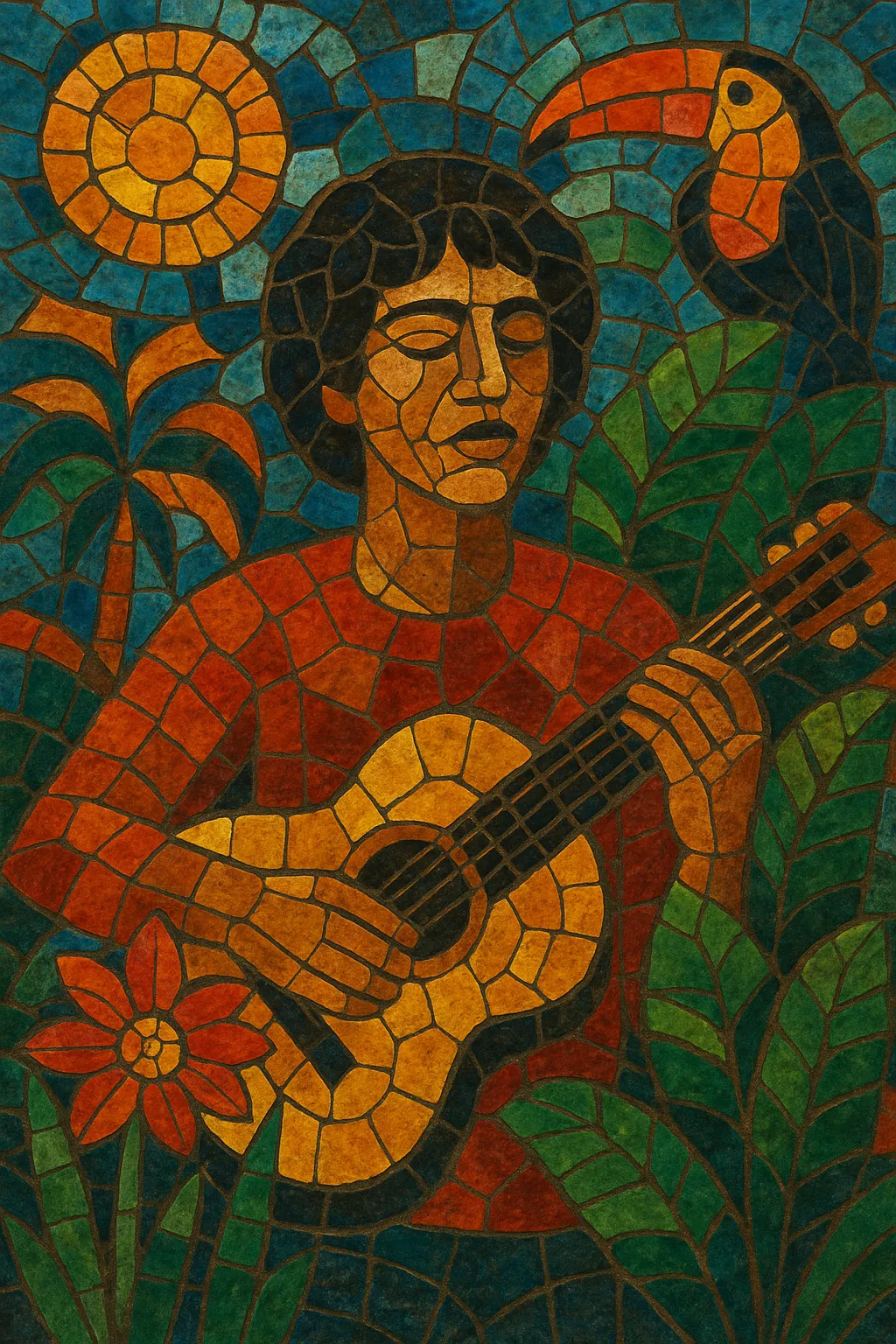Tropicália (also known as Tropicalismo) is a late‑1960s Brazilian movement that fused local popular and folkloric forms with global pop and rock, avant‑garde ideas, and mass‑media aesthetics. It treated culture with an "antropofagia" (cultural cannibalism) ethos—cheerfully absorbing and transforming foreign influences alongside Brazilian traditions.
Musically, it blends samba and baião rhythms, bossa nova harmonies, psychedelic rock timbres, collage‑like arrangements, and orchestral color. Lyricists used irony, allegory, and vivid imagery to comment on modernity and politics under Brazil’s military dictatorship. The result is music that feels playful yet subversive, sophisticated yet immediate, and unmistakably Brazilian.
Tropicália emerged around 1967–1968 in Brazil as a cross‑disciplinary movement involving musicians, poets, visual artists, and theater makers. Drawing on the modernist idea of cultural antropofagia (cannibalism), artists such as Caetano Veloso, Gilberto Gil, Gal Costa, Tom Zé, Os Mutantes, arranger Rogério Duprat, and poet Torquato Neto merged samba and baião with electric rock bands, studio experimentation, television variety‑show aesthetics, concrete poetry, and pop art.
The compilation album "Tropicália: ou Panis et Circensis" (1968) effectively served as the movement’s manifesto—its songs mixing lush orchestration, fuzz guitars, humorous pastiche, and pointed social commentary.
The movement provoked both right‑wing censors and segments of the nationalist left, who criticized its embrace of electric guitars and international pop. In late 1968, after Brazil’s military regime enacted Institutional Act No. 5, Veloso and Gil were arrested and then exiled to London. Public pressure and censorship curtailed the movement’s visible activity, but its ideas continued to percolate through Brazilian music.
Even as the original collective dispersed, Tropicália’s hybrid methods reshaped MPB (Música Popular Brasileira) and encouraged subsequent generations to freely mix genres, media, and high/low culture. Its spirit can be heard in 1970s Brazilian rock and samba‑rock, in the 1990s manguebeat scene from Recife, and in global indie/neo‑psychedelia that rediscovered Os Mutantes and the Tropicalistas. Today, Tropicália is recognized as a cornerstone of Brazilian modern music and a template for culturally hybrid pop.


